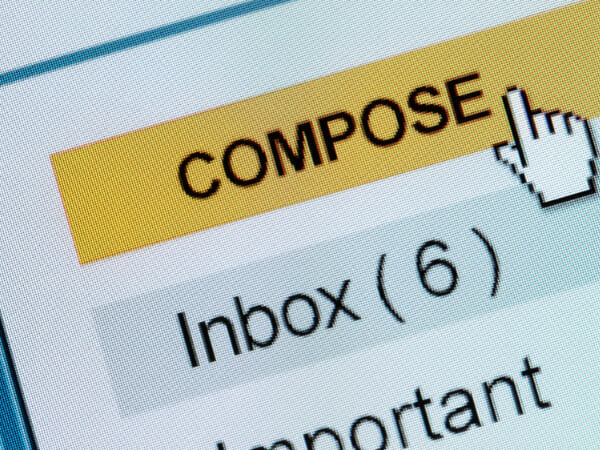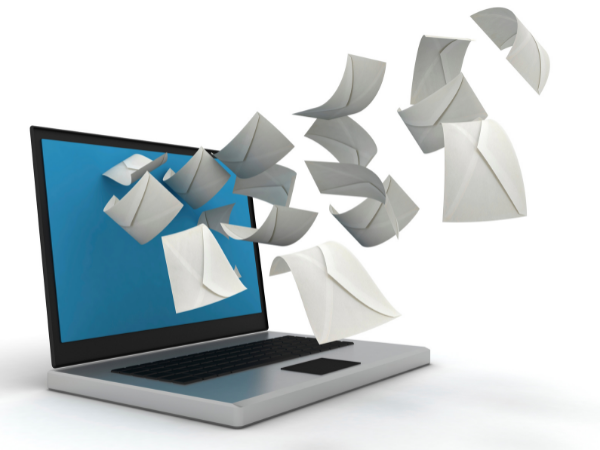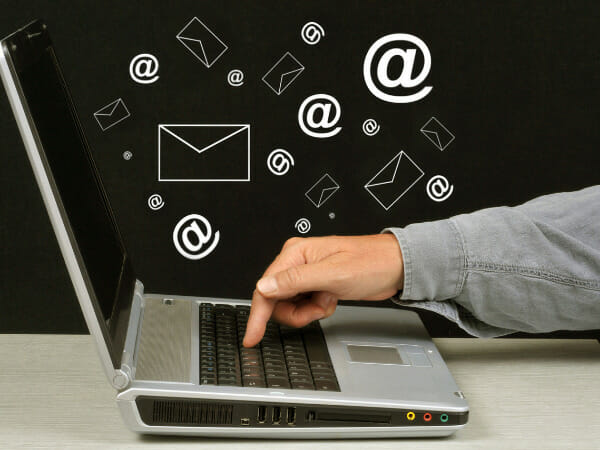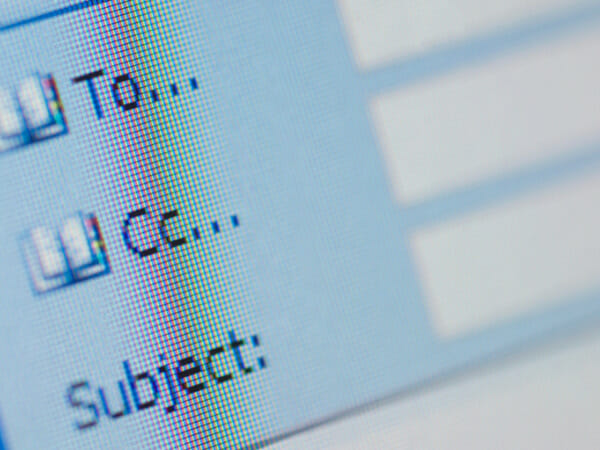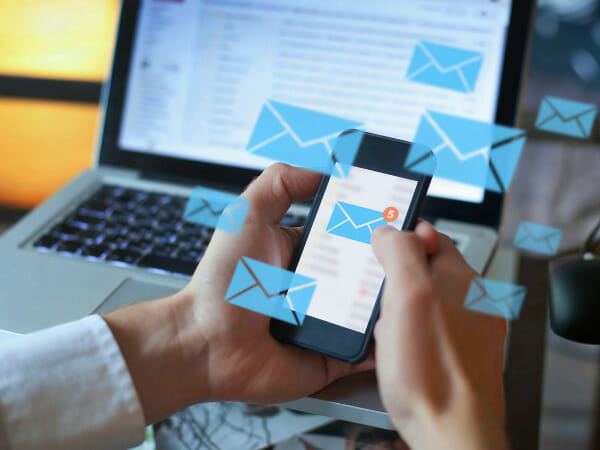How to Send a Follow-up Email After Receiving No Response
There are instances when writing a follow-up email after receiving no response might seem nervy, but waiting without a response to the initial email won’t stop the anxious feeling you have.
Therefore, why wait? Get to work and send a follow-up email.
Studies have shown a response rate greater than 20% to the first email sent. This implies a significant increase in your chances of getting a response to the previous email sent after a quick follow-up.
There is every positive outcome to sending a follow-up email after no response.
There are questions regarding follow-up emails and common mistakes to avoid, which shall be explicitly answered in this blog post with email examples to go with them.
These questions are:
- Why should you send a follow-up email?
- What is the required number of follow-up emails to send?
- When is the appropriate time to send a follow-up email after no response?
- How to automate sending a follow-up email?
- How can you write a follow-up email?
Also, this blog post will guide you on the hard and fast rules to follow and use when writing your first follow-up email, such as:
- Personalizing your follow-up emails.
- How to craft follow-up email subject lines.
- How to select a fitting follow-up email template.
Now, let’s get started on answering the questions regarding follow-up emails.
Why should you send a Follow-up Email?
The answer to this question isn’t complicated: Sending a follow-up email enhances your chances of receiving a response.
Sometimes, emails can be lost in your prospect’s inbox. You can even ignore them occasionally due to cold mail campaigns not highlighting pain points. Perhaps, your outreach campaign fails to persuade your target audience.
There are instances where chasing a business deal requires constant communication till a hitch appears−the hitch being a lack of response to subsequent follow-ups.
This can be pretty troubling as you’re left wondering what went wrong in your business proposal.
You might think it will be too much trouble to pursue further action in getting a response from the prospect company. At this point, most people tend to cease writing follow-up emails, but they should not stop.
Follow-up emails could prompt the previous email if it were unnoticed earlier.
Research studies have proved that sending a follow-up email after no response will improve your median reply rate by over 11%.
Choosing to ignore this median chance might make the difference in getting a positive or negative response.
However, you should take note of this vital fact: follow-up emails shouldn’t just serve as reminders; they should also supply supplementary information.
If you think you should send a follow-up email to act as a prompt, ensure additional information concerning your proposal is also included to gain interest.
Remember that follow-ups to the initial email are a unique chance to gain attention and supply additional information to your prospect concerning your proposal.
What is the required number of follow-up emails to send?
At this point, you can already craft follow-ups with precision and efficiency. You should know the required number of follow-up emails to send. There is a simple principle for understanding the appropriate amount of follow-ups to send:
You should only dispatch follow-ups when you have a rationale for doing so
Your rationale for sending a follow-up might be the lack of a response.
That is a good reason for sending your first message, and you should ensure there is additional worth with every follow-up sent. This gives your follow-up an advantage in achieving their intentions.
Never ask, “Why have I not gotten a reply?” in your follow-ups.
Do you want to send two follow-ups and have only one rationale for sending one follow-up? Send a single follow-up instead.
It is recommended to send at most one follow-up; this helps in link building and will give more reason to highlight your prospect’s pain point. You should work on writing alluring emails instead of sending too many follow-ups. If you plan to send multiple follow-up emails, you should restrict your cold email campaign to three follow-ups.
Sending too many follow-ups will make your prospect irritated; this might hurt your company’s image.
If you feel three follow-ups aren’t adequate, you should use other social platforms like Twitter and LinkedIn.
Your amount of follow-ups is determined by your outreach campaign and target audience.
Determine the number of follow-ups subject to the outreach campaign
In a link-building campaign, a single follow-up will provide most links. Sending more than a single follow-up will annoy your prospects.
Here’s a sample of a single and effective follow-up that remind your prospects about your proposal:
“Hello, Irene,
I realized this might not be your focus at the moment.
Who is the person on your team to update servers?
Thank you!
Annie.”
“Hi, Annie,
Yes, our CTO Mark ….. is responsible for that.
Did you use an automation service to follow up on this link?
Regards.
Irene.”
If the goal of your outreach campaign is sales, you might require multiple emails.
Your primary aim can supply extra merits with your follow-ups once you know your prospect’s pain points.
Determine the number of follow-ups depending on your target audience
When sending cold emails, multiple follow-ups might be necessary to achieve your aim of delivering your proposal effectively.
Few follow-ups will do the intended work if you send follow-ups to a general audience.
The best recommendation is to curate a system that suits your taste:
- Find equilibrium between being too assertive and not being driven enough.
- Ensure you try out different follow-up sequences.
- Pick one which works for you.
When is the appropriate time to send a follow-up email after no response?
There is no reason for you to wait a long time before sending a follow-up email. The majority of emails are opened within the same day of being received. If you don’t get a response on the day the email is sent, getting a reply in subsequent days is extremely low.
Hence, you should not wait a week before sending a follow-up email. Rather than sending a follow-up the same day the first email is sent, it is a great idea to wait two to three days to send the first follow-up email. In a great week, you might have multiple responses.
Knowing the general rule of waiting two to three days before sending a follow-up email, you should also give this same wait time to subsequent follow-ups to avoid appearing jarring to the prospect.
Below lies an approach to spacing your cold emails:
- 1st day: First cold email
- 3rd day: Initial Follow-up
- 7th day: Second Follow-up
- 14th day: Third Follow-up
- 30th day: Fourth Follow-up
From the fourth follow-up email, send a subsequent email once monthly.
How to automate sending Follow-up Emails?
You already know why you should send follow-up emails and when to send these emails; now, you will learn how to automate sending follow-ups after a cold email outreach.
Some tools are designed to aid you in producing and organizing follow-up emails to keep track of multiple previous emails sent. A good follow-up strategy is also essential.
These tools are highly efficient and will provide the best service for monitoring your outreach email campaigns. This way, automated prospecting makes sense and provides all the data you need. Once you have selected your email automation tool, you can work on the same subject line and email.
Some email automation tools are:
- Constant Contact
- Mailchimp
- Drip
- Active Campaign
- Wishpond
- Keep
- Benchmark Email
- Mailjet
- Omnisend
- Convertkit
There are some email automation tips to take note of:
- You should consider the timing of the emails to be sent.
- Ensure the volumes of the messages to be sent are suitable and not too much.
- Test the email automation service before you commit fully to it. This will help you avoid unsuitable occurrences.
- Make sure there is an excellent opt-out feature on the email automation service.
- Ensure your automated emails adhere to CAN-SPAM and CASL laws.
How can you craft a follow-up email?
You already know the significance of sending a follow-up email, how long you should wait before sending a follow-up and how to automate follow-ups. Now, you shall learn the art of crafting and perfecting follow-up emails.
Do recall that subject lines are the first things prospects observe in emails. The wrong subject lines can make candidates think your follow-up email is spam. So make sure your email opening lines are correctly written. Sales professionals always take note of catchy subject lines.
Here are important guidelines to take note of:
Include Context
To write a follow-up email, you must make your recipient recall the previous email. There is a higher chance of your recipient having a positive response to your email if they are made to remember your last interaction.
Some opening lines that will help are:
- I wanted to follow up on the email sent on [date email was sent] about [subject of the email].
- I wanted to enquire about my previous email [subject of email].
With these openers, your follow-up will receive more positive interactions.
Take note of opening lines to avoid:
- Just wanted to check-in
- Thought I could check in and hear about
- Just wanted to find out
- Just wanted to know.
Ensure value is added
In every follow-up you send, consistently deliver added value for the prospect.
Your prospect should know you can always provide relevant worth. This improves your chance of receiving a positive interaction.
You should avoid work-shy phrases where nothing is added to the email, such as; ‘just catching up’ or ‘checking in.’ You have to make the email worth your time.
Offering immediate value such as digital resources, free templates, and case studies can improve positive interactions concerning your proposal.
These offers can improve your follow-up response rates significantly. It can prove your worth as an asset to your prospects.
Make your Email Short
Studies have shown that shorter emails (90 -110 words) constantly outdo longer mails (150-170 words). Many people access their mails via mobile, so endeavor to keep them brief.
Shorter emails look straightforward.
Avoid irrelevant greetings such as:
- I hope you’re doing well.
- Warm greetings.
You should be polite without the use of irrelevant greetings.
Also, eliminate wordy sentences. Avoid making your sentences lengthy; it can give a tone of uncertainty.
Here’s a sample of a short email that is brief and straight to the point:
“Hi, Michelle,
I’d like to follow up on how we can work together concerning the proposal.
I am open to discussions. Contact me at ……
P.S. If you aren’t the right person for this matter, I’d like to know the contact to talk to.
Best regards,
Colin.”
In this example:
- The sender made a reminder about the previous email.
- Also, the sender added a call-to-action concerning communication.
- The sender asked for the decision-makers information if the recipient wasn’t the one responsible for the action.
Explain the Reason for your Email
There should be an explicit explanation in your follow-up email. You should inform the recipient of the reason for your email. Some examples are:
- [Product title] can effectively provide help with [function of prospect’s role]. I would like to have a quick chat.
- Our [product title] has just been launched, and it could contribute to [function of prospect’s role]. For essential information, a link will provide you with that, but a conversation concerning your functional needs would be better to know how [product title] might help you.
- [Product title] can help you, and you might be interested in trying it out soon.
The primary purpose of explaining is to make your prospect notice your proposal. Refrain from using ‘I’ often.
Add a Call-to-action
A call-to-action gives your email recipient-specific instructions that promote a positive response. The purpose of a call-to-action is to be clear in the request of your cold email.
Let’s look at an email example:
“Hello,
I hope this email finds you well.
So, I would like a follow-up to my previous email.
I await your response.”
This follow-up email sample lacks a call-to-action, context, and personalization. What does the sender require? It makes it difficult to know what the sender wants from you even after reading the previous email.
A call-to-action will serve as a pathway for the recipient to interact and respond to your proposal. Ensure you make it simple for the recipient to send a reply.
For example, requesting a meeting should require you to suggest the date and time (a remote or in-person meeting).
Here are some email examples:
- Does 3:30 p.m. on Monday work for you?
- Reply ‘yes’ if you would like to get more resources on the [subject matter].
Take care in making your call-to-action clear and explicit in detail. It will add the element of attraction to it. State your intentions and what you want them to do.
Take care in making your tone sound passive-aggressive
When crafting your follow-up, try to avoid having a passive-aggressive manner.
Passive-aggressive phrases can result from worry, and it makes you sound desperate. These phrases can easily make your recipient tire of your email and erode any built-up trust. You should always write a polite follow-up email.
Here’s an email example:
“Hello,
I’m just following up, as there was no reply to all my previous emails.
Kindly follow up as soon as possible.
Mike.”
You probably wouldn’t reply to an email with this tone.
It might put off any previous inclination to reply, as a passive-aggressive tone can initiate reading. Therefore, you should erase passive-aggressive phrases in your follow-up emails, such as:
- I have been sending emails.
- Any update on this?
- Just following through
- I have been trying to get a response.
- Kindly take note
All these phrases indicate frustration, which might put off your prospect from considering your proposal.
Also, try not to sound desperate when writing follow-ups, it’s normal to be disturbed, but you should reassess your initial reason. Write a follow-up message with a clear tone.
These phrases will prove that you are desperate, so omit them as well:
- Sorry for being persistent
- I apologize for the disturbance
- If it’s not too stressful
Wrap up your Email
Close up your email in a manner that is genuine to you. It should tailor to your interaction with the recipient.
There are some examples, but you should go with what suits you.
Here are some examples:
- Regards.[Your name]
- I look forward to your response![Your name]
Expert Tips that will aid you in writing follow-ups
Well, at this point, you have almost all you need, except some essential expert tips.
We will shed light on these tips that you cannot do without. After you have gained knowledge of these tips, your follow-up response rate should increase without any difficulty.
So what are these tips, and why are they essential to your email follow-ups?
These are significant hints on perfecting follow-ups. They serve as pointers to knowing what to add and not to include in follow-ups.
Now, these expert points are:
Personalizing your Follow-ups
This is important for dispatching a successful cold follow-up. Your response rate will improve if you personalize your follow-up. So adding a personal touch to your follow-up won’t do any harm.
This will be a social proof of your interactions.
There are two primary methods for personalizing follow-ups:
- If you have few amounts of prospects, it’s easier to write each follow up from scratch and personalize it to each option;
Here is an excellent example of a personalized email:
“Hello, Lily,
I hope you are well. We talked about (name of company) new product in January.
I spoke to your (company’s chief product designer’s name), and he explained the details of the product quite well.
So, I was hoping to have a conversation concerning your marketing strategy. I have some insights that would be of use in marketing this product.
As I mentioned earlier, our marketing and sales teams are pretty adept at handling products. You know of our work with (competitor’s company name).
Do you have a few minutes to have a meeting with me?”
This email sample is good because of how it is personalized. The sender did a lot of work by gathering research. Here is how the sender made the follow-up effective:
- Made mention of a previous conversation
- Made mention of a mutual connection
- Providing an offer on marketing strategy
- Ends with a CTA.
2. You can automate personalization
Personalizing all these follow-ups will be stressful when you have to send multiple mails. However, there are email automation tools that assist with personalizing messages.
Crafting Subject lines
You shouldn’t select poorly used subject line examples in creating a subject line. You need a catchy subject line because this is the first part of your email that the receiver sees.
When you send a follow-up, the first thing your prospects observe is your subject line, and it can decide if your email will be read or treated as spam.
Your email subject line should be honest. Do not embellish subject lines when you haven’t had any earlier interaction.
Here’s an example:
- “Re: Our meeting last week,”
- “Re” After our brief phone call,”
Here are some insightful points for subject lines:
- Make them short
- Make them personal
Do I need to craft a unique subject line for each follow-up?
You can use the same email thread with the same opening line.
This will make your prospects get reminded of your initial proposal. You can also use this medium to continue the messages concerning your submission in the same thread.
You can also use a distinct subject line if you want to gain more attention and avoid your follow-up being similar to spam.
Some examples of subject lines for cold emails follow-ups:
- Nice to meet you (first name)
- Great speaking with you
- I forgot to mention
How to select a Fitting Follow-up Email Template?
There are specific instances where unique templates are required to write a follow-up.
Such an instance can be: After a meeting, you just had a great meeting with your prospect’s company, an opportunity for a trigger event, and you want to send a follow-up.
However, a hitch occurs, and it seems like you aren’t getting replies from the client you just had a meeting with, and you might want to send another meeting request.
Here are two quick follow-ups you can send to move things along:
Next Step?
[Name of recipient], I’m writing to follow up. I am uncertain of our next step.
Kindly let me know what our next step is, if any?
Thank you.
[Name/Signature]”
Update?
[Name of recipient], I’m writing to follow up on our last conversation.
I require an update on your account.
Are there any next steps?
[Name/Signature]”
After sending a follow-up email, even after a single follow-up, it doesn’t guarantee a response from your client.
However, sending more follow-ups will improve your chances of getting a reply. Being persistent always profits in sales follow-ups.
Here is an example:
Five ways we can help improve your team
‘Hello [Name of recipient],
I wanted to follow up on the proposal on the five methods we have of improving your sales prospecting process content sent in the first email]. I would like to help you implement these methods.
Are you available for a chat or a call on [date and time]? Do let me know what you think.
Warm regards,
[Name/Signature]”
After too many Follow-ups… Time for the breakup email; Continuing to send follow-up mails concerning your proposal will be annoying.
If you have sent several follow-ups and haven’t received a reply, you should send a breakup email.
It is essential to ‘break up’ in a professional manner. This retains your positive image and professional relationship and might help in future dealings with the client. They might refer you to another client, so ensure you end up on a positive note.
Here is an example that will help:
Is the fondness gone?
“Hello [Recipient name],
I wanted to reach out one last time. I have a couple of points that can help with your business deal. Please contact me if you would like to work it out together. If you don’t, I’ll assume the timing is wrong.
My contact information is below if you would like to communicate.
Regards,
[Name/Signature]”
With the template below, you can end your entire proposal amicably.
Here’s another example:
Should I cross you off my list?
“Hello [recipient name],
I recently reviewed my email list for guest posts. We haven’t been able to get your contribution for a while. I’m assuming your interest in our project has waned. There should be no issue, just send a reply so that I can take you off my list. If you still want to continue, I am available for a chat, and I can send my calendar link.
Regards,
[Name/Signature]”
Conclusion
After reading the entirety of this post, you have all you need to write a successful follow-up email. Stop hesitating about sending a follow-up and start writing now.

